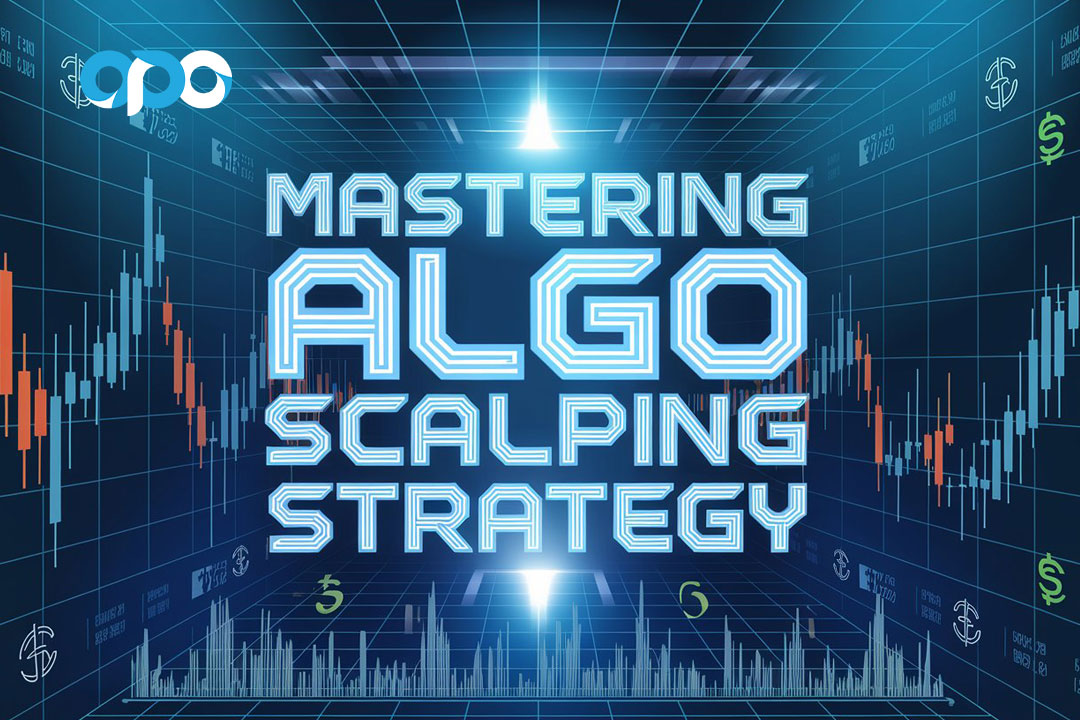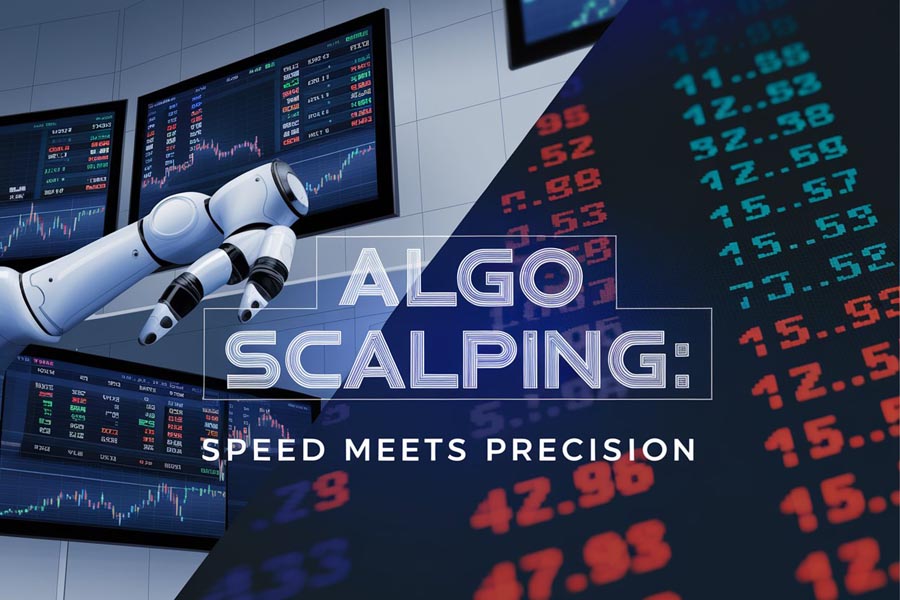Are you ready to revolutionize your forex trading game? Look no further than algo scalping strategy, the cutting-edge approach that’s taking the trading world by storm. Algo scalping strategy combines the precision of algorithmic trading with the rapid-fire tactics of scalping to maximize profits in the forex market. This powerful method leverages advanced technology to execute multiple trades within seconds, capitalizing on even the smallest price movements.

As the forex market evolves, staying ahead of the curve is crucial, and algo scalping strategy provides traders with the tools they need to thrive in this fast-paced environment. In this comprehensive guide, we’ll dive deep into the world of algo scalping, exploring its benefits, challenges, and how you can implement this strategy using a reputable online forex broker to supercharge your trading success.
What is Algo Scalping Strategy?

Algo scalping strategy is a sophisticated trading approach that combines the power of algorithmic trading with the quick-profit potential of scalping. Let’s break down these components:
- Algorithmic Trading: This involves using computer programs to execute trades based on predefined rules and mathematical models. These algorithms can analyze market data, identify trading opportunities, and execute orders at lightning speed.
- Scalping: A trading style that aims to profit from small price changes, often entering and exiting positions within seconds or minutes. Scalpers typically make numerous trades throughout the day, aiming for small but consistent profits.
When these two elements are combined, the result is a powerful algo scalping strategy that can:
- Analyze market conditions in real-time
- Identify profitable trading opportunities
- Execute trades with minimal delay
- Manage risk automatically
- Operate 24/7 without human fatigue
Benefits of Algo Scalping Strategy

1. Speed and Efficiency
One of the primary advantages of algo scalping is its unparalleled speed. Algorithms can process vast amounts of data and execute trades in milliseconds, far surpassing human capabilities. This speed allows traders to capitalize on fleeting market opportunities that would be impossible to exploit manually.
2. Emotion-Free Trading
Human traders often fall prey to emotional decision-making, leading to impulsive trades or hesitation at crucial moments. Algo scalping removes this emotional element, adhering strictly to predefined rules and strategies regardless of market volatility.
3. Consistency
With algo scalping, every trade is executed based on the same set of criteria, ensuring consistency in your trading approach. This consistency can lead to more predictable results and easier performance analysis over time.
4. Backtesting Capabilities
Before deploying an algo scalping strategy in live markets, traders can backtest their algorithms using historical data. This allows for strategy refinement and optimization without risking real capital.
5. 24/7 Market Monitoring
Algorithms can monitor markets around the clock, identifying opportunities even when you’re asleep or away from your trading desk. This constant vigilance ensures you never miss a potential profitable trade.
Key Components of a Successful Algo Scalping Strategy

1. Robust Algorithm Development
The heart of any algo scalping strategy is the algorithm itself. A successful algorithm should include:
- Technical Indicators: Utilize a combination of indicators such as Moving Averages, RSI, and Bollinger Bands to identify entry and exit points.
- Price Action Analysis: Incorporate pattern recognition to identify trends and potential reversals.
- News Sentiment Analysis: Integrate real-time news feeds to adjust trading decisions based on market-moving events.
Read More: Range Scalping Strategy
2. Risk Management Protocols
Effective risk management is crucial in algo scalping. Your strategy should include:
- Stop-Loss Orders: Automatically place stop-loss orders to limit potential losses on each trade.
- Position Sizing: Implement dynamic position sizing based on account balance and market volatility.
- Drawdown Limits: Set maximum drawdown limits to halt trading if losses exceed a predetermined threshold.
3. High-Frequency Trading Infrastructure
To execute trades at the speed required for successful scalping, you’ll need:
- Low-Latency Connections: Use high-speed internet and co-located servers to minimize execution delays.
- Advanced Trading Platforms: Leverage sophisticated trading platforms that support algorithmic trading and high-frequency order execution.
4. Data Feed Integration
Accurate and timely data is essential for algo scalping. Ensure your strategy incorporates:
- Real-Time Market Data: Subscribe to high-quality, low-latency data feeds for accurate price information.
- Economic Calendar Integration: Automatically adjust trading parameters around major economic releases.
Implementing Your Algo Scalping Strategy

1. Choose the Right Programming Language
Select a programming language suitable for algorithmic trading. Popular options include:
- Python: Known for its simplicity and extensive libraries for financial analysis.
- C++: Offers superior speed, crucial for high-frequency trading.
- MQL4/MQL5: Specifically designed for MetaTrader platforms, widely used in forex trading.
2. Develop and Backtest Your Algorithm
- Create Your Algorithm: Code your trading rules and risk management parameters.
- Backtest: Use historical data to test your strategy’s performance.
- Optimize: Refine your algorithm based on backtesting results.
- Forward Test: Run your strategy on a demo account with live market data.
3. Choose a Suitable Broker
Select a forex broker that supports algorithmic trading and offers:
- Low-latency execution
- Competitive spreads
- Reliable API for algo trading
- Advanced order types (e.g., OCO orders)
4. Monitor and Refine
Once your algo scalping strategy is live:
- Continuously Monitor Performance: Track key metrics such as win rate, profit factor, and drawdown.
- Adapt to Market Changes: Regularly update your algorithm to account for evolving market conditions.
- Implement Safeguards: Use circuit breakers to halt trading during unexpected market events.
Challenges and Considerations
While algo scalping can be highly profitable, it’s not without challenges:
- High Competition: You’re competing against other sophisticated algorithms and institutional traders.
- Technical Complexity: Developing and maintaining trading algorithms requires significant technical expertise.
- Market Impact: High-frequency trading can potentially impact market prices, especially in less liquid currency pairs.
- Regulatory Scrutiny: Some jurisdictions have implemented regulations specifically targeting high-frequency trading strategies.
- Technology Risks: System failures or connectivity issues can lead to significant losses in high-frequency trading environments.
Read More: intraday scalping strategy
Regulatory Landscape for Algo Scalping
The regulatory environment for algorithmic trading, including algo scalping, has become increasingly complex in recent years. Traders must be aware of and comply with various regulations that can impact their strategies:
MiFID II in Europe
The Markets in Financial Instruments Directive II (MiFID II) introduced strict rules for algorithmic trading in the European Union. Key requirements include:
- Algorithm Testing: Firms must thoroughly test their algorithms before deployment.
- Kill Switches: Mandatory implementation of emergency stop mechanisms.
- Audit Trails: Detailed record-keeping of all algorithmic trading activities.
Dodd-Frank Act in the United States
The Dodd-Frank Wall Street Reform and Consumer Protection Act includes provisions affecting algorithmic trading:
- Registration Requirements: Some high-frequency traders may need to register as broker-dealers.
- Anti-Disruptive Practices: Prohibitions on certain trading practices that could disrupt markets.
ASIC Regulations in Australia
The Australian Securities and Investments Commission (ASIC) has implemented rules for algorithmic trading, including:
- Risk Controls: Mandatory implementation of pre-trade and post-trade risk controls.
- Testing Requirements: Comprehensive testing of algorithms before deployment.
Global Trends
Globally, regulators are focusing on:
- Transparency: Increased reporting requirements for algorithmic trading activities.
- Market Stability: Measures to prevent algorithmic trading from causing market disruptions.
- Fair Access: Ensuring all market participants have equal access to trading opportunities.
Traders must stay informed about these regulations and adapt their algo scalping strategies accordingly to remain compliant.
Algo Scalping vs. Other Trading Strategies
To understand the unique advantages and challenges of algo scalping, it’s helpful to compare it to other popular trading strategies:
Algo Scalping vs. Manual Scalping
- Speed: Algo scalping is significantly faster, executing trades in milliseconds.
- Emotion: Algo scalping removes emotional decision-making, a common issue in manual scalping.
- Consistency: Algorithms provide more consistent execution compared to human traders.
- Complexity: Algo scalping requires more technical knowledge but can handle more complex strategies.
Algo Scalping vs. Day Trading
- Trade Frequency: Algo scalping typically involves more trades per day than traditional day trading.
- Profit per Trade: Scalping aims for smaller profits per trade but higher overall volume.
- Time Commitment: Algo scalping can operate 24/7, while day trading is often limited to specific hours.
- Market Analysis: Day trading often involves more in-depth market analysis, while scalping focuses on quick, short-term opportunities.
Algo Scalping vs. Swing Trading
- Time Frame: Algo scalping operates on very short time frames (seconds to minutes), while swing trading looks at longer periods (days to weeks).
- Position Size: Scalping typically uses larger position sizes with tighter stop-losses, while swing trading often employs smaller positions with wider stops.
- Market Conditions: Scalping can be profitable in ranging markets, while swing trading often relies on identifying larger market trends.
Algo Scalping vs. Position Trading
- Trade Duration: Algo scalping holds positions for very short periods, while position trading can hold trades for months or even years.
- Analysis Type: Scalping relies heavily on technical analysis and short-term price movements, while position trading often incorporates more fundamental analysis.
- Capital Requirements: Position trading typically requires less capital, as it doesn’t rely on high-frequency trading infrastructure.
Understanding these differences can help traders determine if algo scalping aligns with their trading goals, risk tolerance, and available resources.
Read More: atr scalping strategy
Advanced Backtesting Techniques for Algo Scalping
Effective backtesting is crucial for developing successful algo scalping strategies. Here are some advanced techniques to enhance your backtesting process:
1. Walk-Forward Analysis
This technique involves testing your algorithm on a series of overlapping time periods to simulate real-world trading conditions. Steps include:
- Divide historical data into in-sample and out-of-sample periods.
- Optimize your strategy on the in-sample data.
- Test the optimized strategy on the out-of-sample data.
- Move the time window forward and repeat the process.
This approach helps prevent over-optimization and provides a more realistic view of strategy performance.
2. Monte Carlo Simulations
Monte Carlo simulations involve running thousands of randomized scenarios to stress-test your algorithm. This technique can:
- Assess the impact of different market conditions on your strategy.
- Provide a range of possible outcomes rather than a single backtest result.
- Help identify potential weaknesses in your algorithm.
3. Slippage and Transaction Cost Modeling
Accurate modeling of slippage and transaction costs is critical for algo scalping strategies. Advanced backtesting should include:
- Dynamic slippage models based on market volatility and liquidity.
- Realistic transaction cost assumptions, including spreads, commissions, and exchange fees.
- Impact cost modeling for larger trade sizes.
4. Multi-Market Backtesting
Test your algo scalping strategy across multiple currency pairs or even different asset classes to ensure robustness. This can help:
- Identify strategies that work well across various market conditions.
- Reduce the risk of over-optimization to a single instrument.
- Uncover potential correlation risks in your trading approach.
5. Event-Based Backtesting
Incorporate major economic events and news releases into your backtesting framework. This can involve:
- Simulating market reactions to specific types of news events.
- Testing how your algorithm performs during periods of increased volatility.
- Adjusting your strategy to account for scheduled economic releases.
6. Machine Learning Integration
Leverage machine learning techniques to enhance your backtesting process:
- Use clustering algorithms to identify different market regimes.
- Employ genetic algorithms for strategy optimization.
- Implement neural networks for pattern recognition and prediction.
By employing these advanced backtesting techniques, traders can develop more robust and reliable algo scalping strategies, increasing their chances of success in live trading environments.
Opofinance Services: Your Partner in Algo Scalping Success
When it comes to implementing your algo scalping strategy, choosing the right broker is crucial. Opofinance, an ASIC-regulated forex broker, offers a comprehensive suite of services tailored to algorithmic traders. With their cutting-edge trading platforms and low-latency execution, Opofinance provides the perfect environment for your algo scalping strategy to thrive.

One standout feature of Opofinance is their innovative social trading service. This platform allows you to connect with other successful algo traders, share strategies, and even automatically copy their trades. For those new to algo scalping or looking to diversify their approach, social trading can be an excellent way to learn from experienced traders and potentially boost your returns.
Opofinance’s commitment to regulatory compliance ensures that your funds are secure and your trading activities are conducted in a fair and transparent environment. Their advanced risk management tools and educational resources further support your journey in algo scalping, making them an ideal partner for both novice and experienced algorithmic traders.
Conclusion
Algo scalping strategy represents the cutting edge of forex trading, offering unparalleled speed, efficiency, and potential profitability. By leveraging advanced algorithms and high-frequency trading techniques, traders can capitalize on even the smallest market movements to generate consistent profits. However, success in algo scalping requires a combination of technical expertise, robust infrastructure, and a deep understanding of market dynamics.
As you embark on your algo scalping journey, remember that continuous learning and adaptation are key. The forex market is ever-evolving, and your strategies must evolve with it. With the right approach, tools, and a reliable broker like Opofinance, you can harness the power of algo scalping to take your forex trading to new heights. Embrace the future of trading today, and unlock the full potential of your forex investments with algo scalping strategy.
How much capital is typically required to start algo scalping?
The capital required for algo scalping can vary widely depending on your specific strategy and risk tolerance. Generally, it’s recommended to start with at least $5,000 to $10,000 to ensure you have enough capital to withstand potential drawdowns and cover the costs associated with high-frequency trading, such as data feeds and advanced trading platforms. Some professional algo scalpers may use much larger amounts, often $50,000 or more, to fully leverage their strategies. However, it’s crucial to start with an amount you’re comfortable risking and gradually increase your capital as you gain experience and confidence in your algo scalping strategy.
Can algo scalping strategies be applied to cryptocurrencies?
Yes, algo scalping strategies can be applied to cryptocurrencies, and many traders are doing so with success. Cryptocurrency markets often exhibit high volatility and liquidity, making them attractive for scalping. However, there are some unique considerations when algo scalping cryptocurrencies:
Market Structure: Crypto markets operate 24/7, which can be advantageous for algo scalpers but also requires robust systems that can run continuously.
Exchange APIs: Not all crypto exchanges offer APIs suitable for high-frequency trading, so careful selection of trading venues is crucial.
Regulatory Environment: The regulatory landscape for crypto trading is still evolving, which can impact algo trading strategies.
Volatility: While beneficial for scalping, extreme volatility in crypto markets can also increase risks.
When adapting algo scalping strategies to cryptocurrencies, it’s essential to account for these factors and thoroughly test your algorithms in the crypto environment before live trading.
How do you measure the success of an algo scalping strategy?
Measuring the success of an algo scalping strategy involves analyzing several key performance indicators (KPIs):
Sharpe Ratio: This measures the risk-adjusted return of your strategy. A higher Sharpe ratio indicates better risk-adjusted performance.
Win Rate: The percentage of profitable trades. For scalping, a high win rate is often crucial due to the small profit target per trade.
Profit Factor: The ratio of gross profits to gross losses. A profit factor above 1.5 is generally considered good for scalping strategies.
Maximum Drawdown: The largest peak-to-trough decline in account value. This helps assess the strategy’s risk.
Average Trade Duration: For scalping, this should typically be very short, often measured in seconds or minutes.
Slippage: The difference between expected and actual execution prices. Minimizing slippage is crucial for successful scalping.
Consistency: Look for steady performance across different market conditions and time periods.
It’s important to evaluate these metrics over a significant sample size of trades and across various market conditions to get a comprehensive view of your strategy’s performance. Regular monitoring and optimization based on these metrics can help ensure the ongoing success of your algo scalping strategy.







